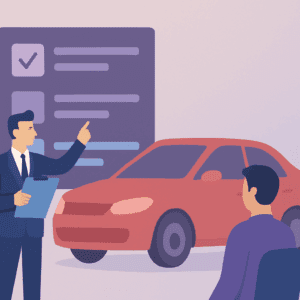Share
Struggling with the expense of turnover, employers are complaining about the end of workplace loyalty. Today, many workers see job-hopping as the only way to advance their career (and raise their salary). Since you can’t always offer higher pay than your competitors, internal talent mobility is a great way to advance and retain your best workers.
What is internal talent mobility?
Internal talent mobility isn’t just about promoting team leaders to managers. Mobility also includes transfers between departments and lateral moves within the same company.
- Role-to-role mobility: Employees move laterally within the company and a team, usually keeping a similar salary and job level
- Upward mobility: Employees move to a more senior position, typically within their current department
- Cross-functional talent mobility: Employees move to a new role in a different department or business unit
Why is internal talent mobility important?
Internal talent mobility is great for retention, and it benefits your company at the same time. Internal hires already know a lot about the company, its people and clients, and your workflow.
Here are the ways internal talent mobility can help your business and employees alike:
- Talent retention
- Employee growth
- Addressing skills gaps
- Culture of personal growth
- Optimizing employee talents
- Recruitment
Although you may have a second job opening to fill following an internal transfer, it should be easier to find qualified candidates for entry-level and subordinate positions.
10 ways to boost internal talent mobility
“Promote from within” is easier said than done, but there are lots of ways to mobilize the culture of your workforce.
Establish formal internal mobility program
HR should check in with the C-suite about how much they’re ready to invest in internal talent mobility. You may need to change the way your company approaches recruiting. The ultimate goal of changing the culture will take a longer commitment to visible changes.
Make sure you have the right technology
HR software makes it easier to reward the most productive workers. Use performance management software to help employees see their own progress toward goals. Reporting on individuals and teams can identify management issues and high performers. Look for essential features in payroll software that let you manage incremental raises, overtime, and bonus incentives.
Invest in training & mentorships
Promote professional growth with a Learning Management System (LMS). Upskilling promotes retention and develops potential leaders for future roles. Your specialists can also share their own expertise with a mentorship program. Cross training makes your company more flexible and resilient.
Emphasize the value of institutional knowledge
Senior workers can feel insulted when younger and less experienced managers are brought in as external hires. Internal mobility proves that you value the experience of your own staff. Use year-round DEI policies to make sure you’re bringing a wide range of perspectives to the table.
Incentivize your employees to stay
Do you actively promote retention? Or does rising turnover go unchecked? It’s nice to acknowledge employment anniversaries, but frustrated workers will start to wonder why they’ve spent so many years in the same position. Internal mobility gives ambitious workers a reason to stay.
Don’t forget about horizontal mobility
You can’t promote everyone to senior management. Every company needs an org chart, and it’s no coincidence that most hierarchical org charts look like pyramids. Employee transfers can find a better “fit” and develop new skills without competing to become manager of their current team. Compared to vertical promotions, the corporate pyramid includes more room for horizontal moves and transfers.
Consider succession planning
Ambitious workers will see that they don’t want to be irreplaceable in their current role. In the past, making yourself irreplaceable has been a common sense path to job security. Internal mobility brings some complications, since you’re trading one vacancy for another, but the process can be streamlined with planning and training to promote company growth.
Special projects and committees
Professional growth doesn’t always require promotions and transfers. Individuals can develop new skills and test their leadership abilities on group projects and committees. A robust DEI program can ensure that you aren’t always giving the extra opportunities to the same people.
Job relocation (where possible)
If you have multiple offices, then internal mobility includes transfers between locations. Moving to a new office can bring a fresh start with new colleagues. Managers naturally feel protective of their top talent, but a transfer can benefit individual workers as well as the company overall.
Measure internal hiring success
Keep track of Key Performance Indicators (KPIs) with your employee review process. How does internal mobility affect recruiting costs? Do transfers actually perform better (or worse) than external hires? New policies need to be adjusted based on the feedback of participants, but you’ll also want objective data to test and compare changes. Does the change in culture improve employee satisfaction and turnover?
Discover how Netchex can help your company improve internal talent mobility:
Related articles

Top 3 Reasons Why Your Hiring Process Isn’t Working (And How to Fix It)

Hotel Seasonal Staffing: Strategic Workforce Management for Peak and Off-Peak Periods

Hotel Staffing Plan: How to Create a Strategic Workforce Blueprint for Your Property

